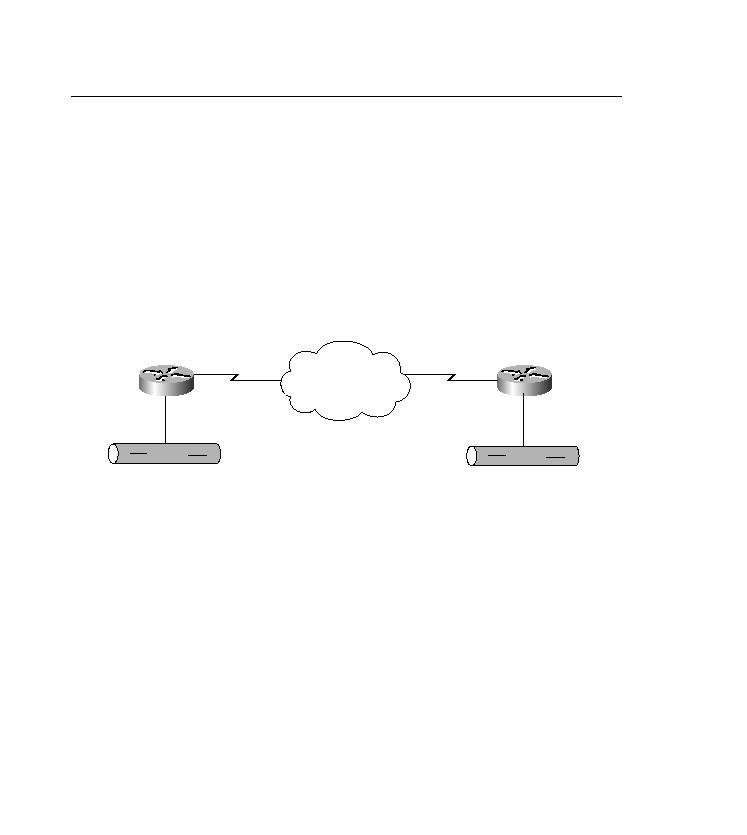
Why Frame Relay? 349
·
Inactive--The switch recognizes the DLCI as a valid circuit, but it is not up and active
end-to-end (perhaps it is not configured correctly, and so on). This can also mean that
the DLCI is configured but the other side of the circuit (remote site) is either down or
not configured.
·
Static--This state is usually on the Frame Relay switch itself. It can mean that the DLCIs
on the switch are statically configured.
·
Active--The DLCI is configured in the local switch and recognizes that this circuit is
connected end-to-end. It is ready to accept user traffic. All systems are go!
The DLCI is locally significant only. As shown in Figure 10-14, there could be a DLCI number
at one end of a circuit and a different DLCI number at the other end.
Figure 10-14
DLCI
An analogy would be an airport. Before you catch a flight into the clouds, you arrive at the
airport and go to a gate--say, Gate 100. When you arrive at your destination, you arrive at Gate
200. Somewhere in the clouds, there was a connection from Gate 100 to Gate 200. This is
typical Frame Relay; it's a good idea to design your network with certain rules. In other words,
if you have a DLCI number of 107, it is a good design practice to make a subinterface of 107
to match it. This simplifies troubleshooting.
Int S0.107
Frame Relay Interface DLCI 107
Theoretically, the Frame Relay specification allows 10 bits for DLCI addressing, or 1024
DLCIs per interface (2
10
). There are several reserved DLCIs (015 and 10071023). Therefore,
Cisco routers support 992 DLCIs per interface. Some engineers recommend a maximum of 20
DLCIs per interface. This is based solely on the amount of traffic that will traverse the Frame
Relay link and the amount of memory available on the router.
If you have a large Novell network, you have to duplicate the SAPs and RIPs for each DLCI,
which causes a lot of overhead and results in lost packets. The recommendation of 20 DLCIs
Frame Relay switches
Router Lewis
Router Kane
DLCI 100
DLCI 200
Ethernet
Ethernet
1. Router Lewis powers up
2. Router Lewis performs a full status inquiry to Frame Relay switch via the LMI protocol
3. Fram Relay switch provides router Lewis with DLCI 100
4. Router Lewis knows about only DLCI 100, not 200
87200333.book Page 349 Wednesday, August 22, 2001 2:53 PM
